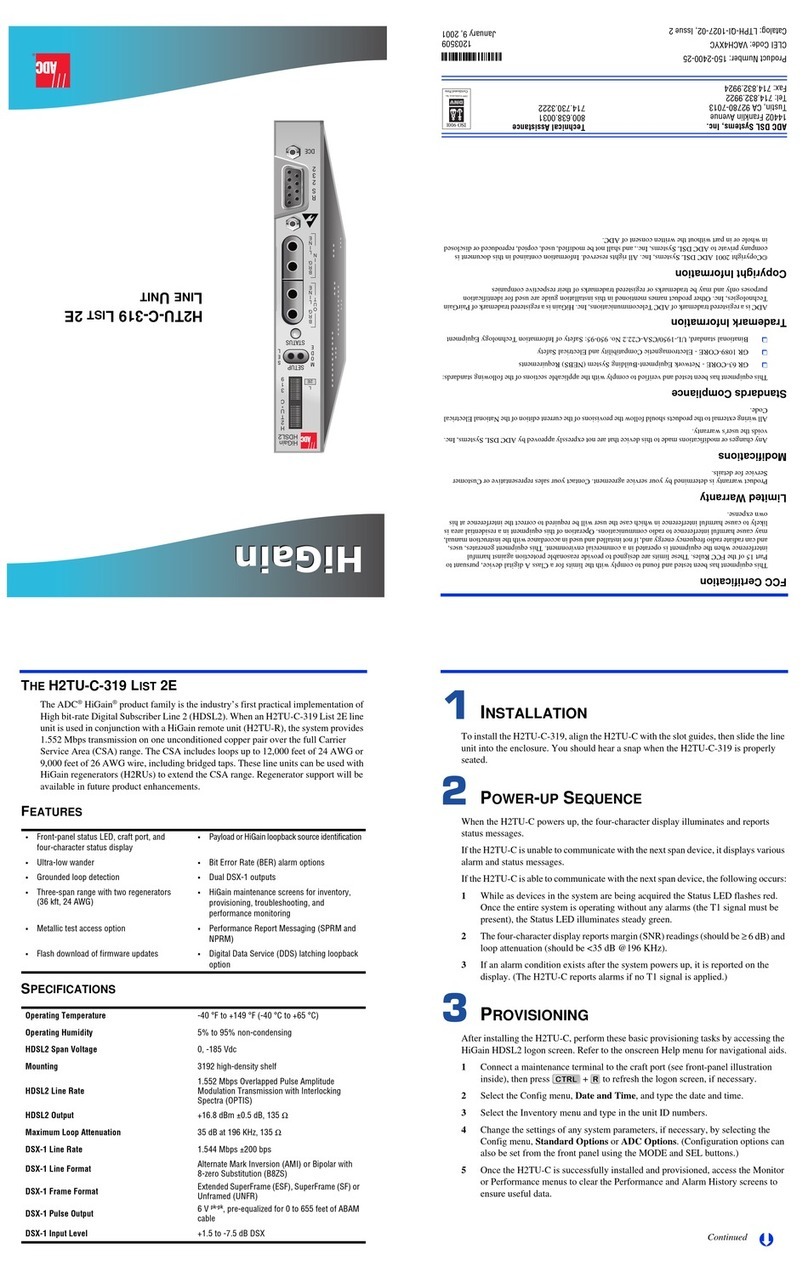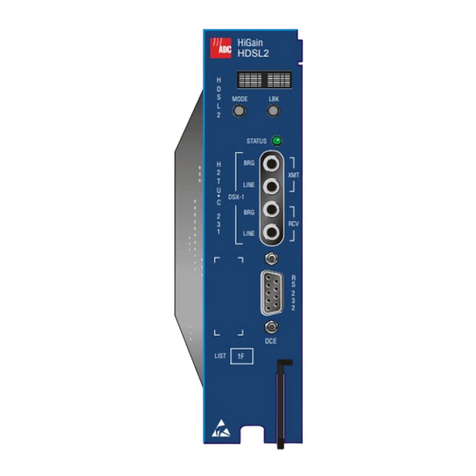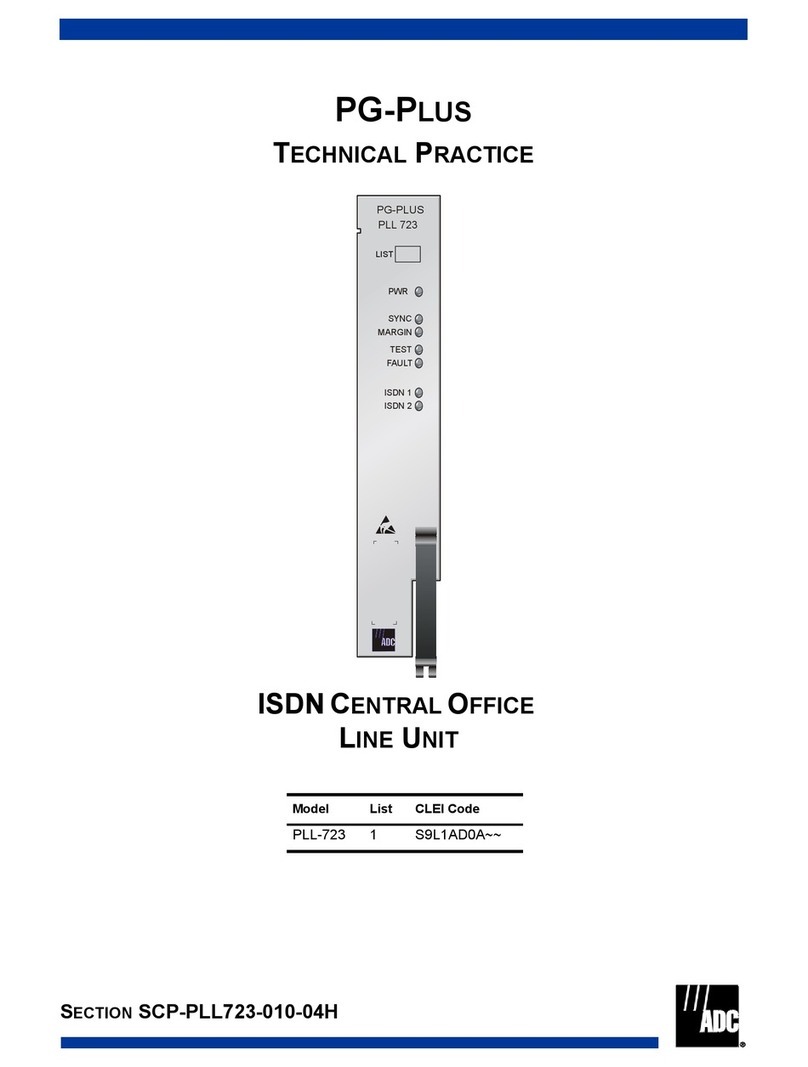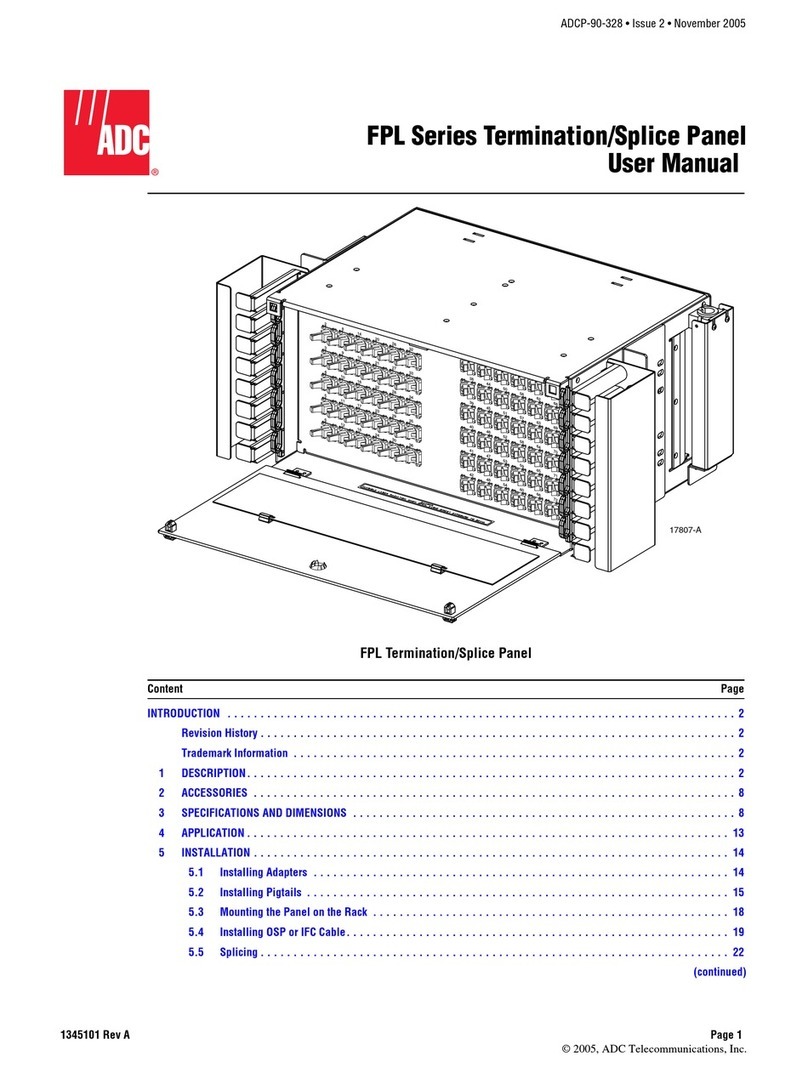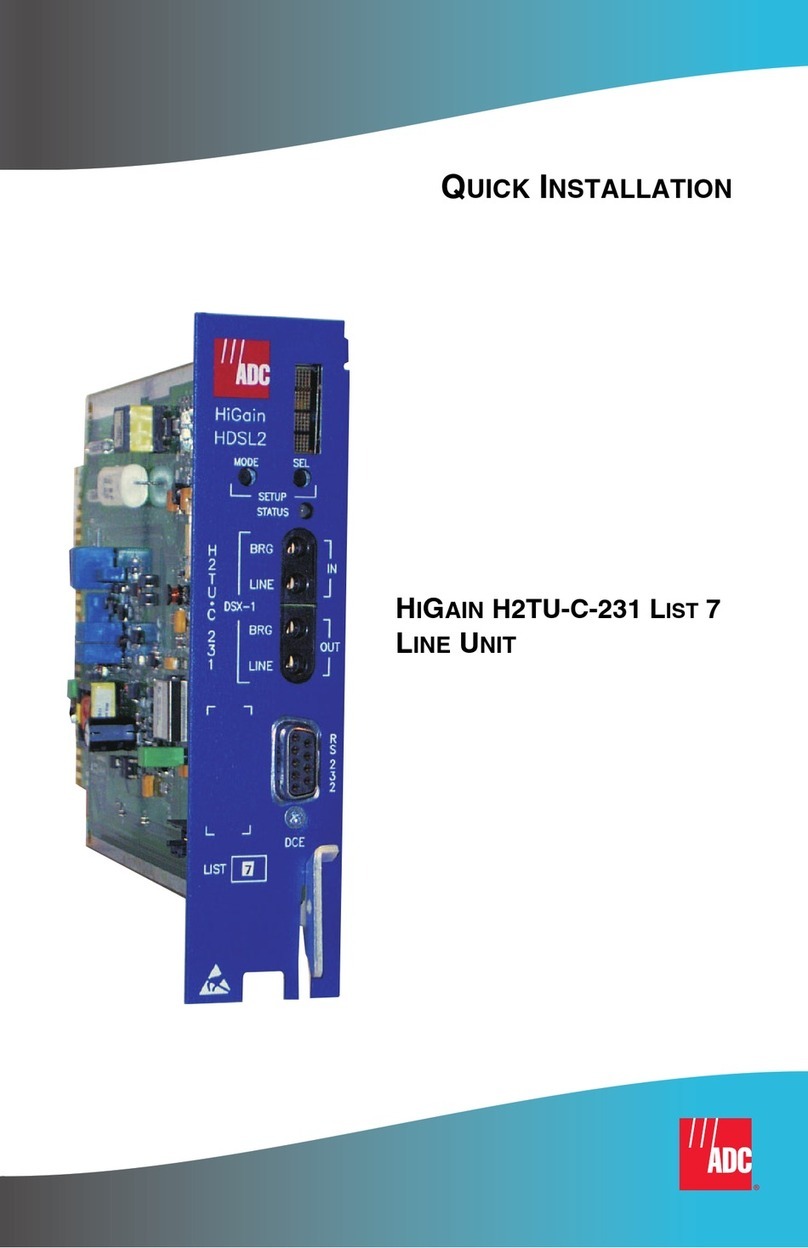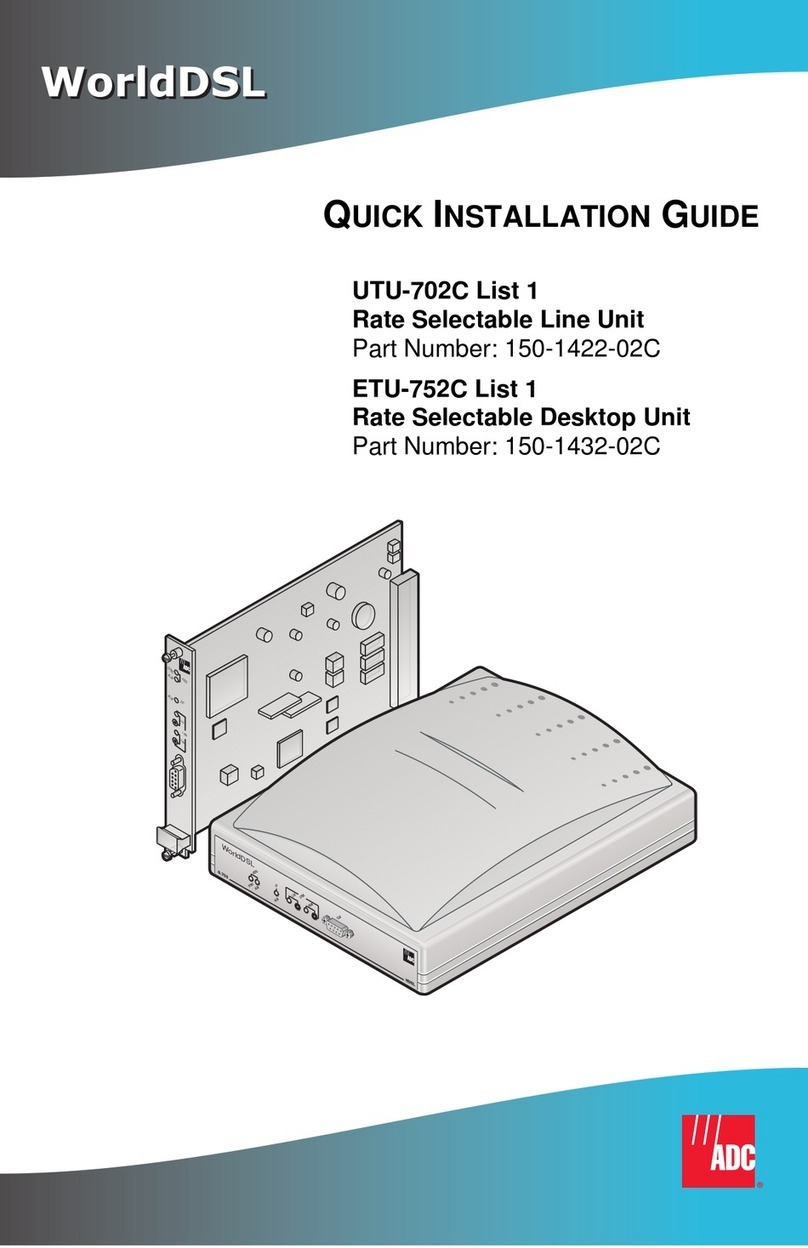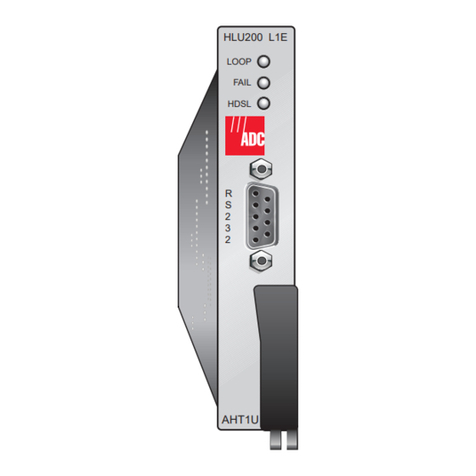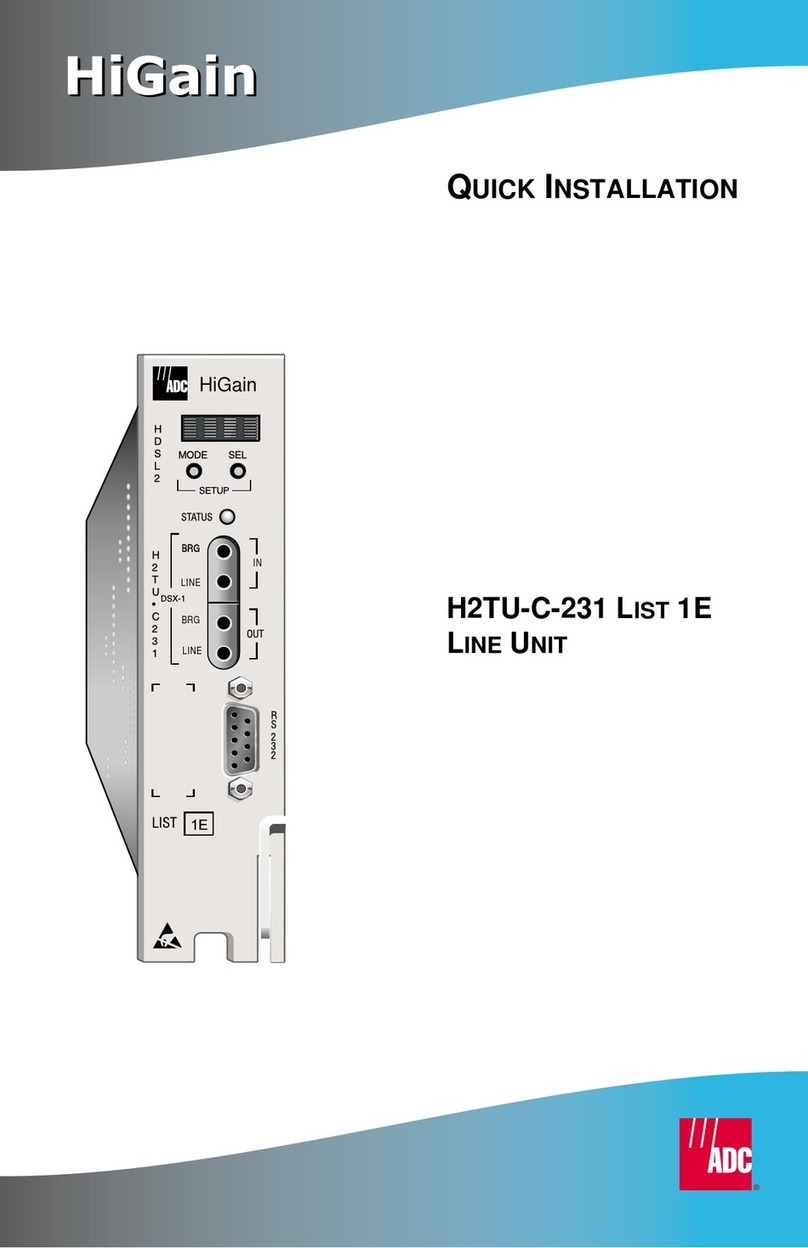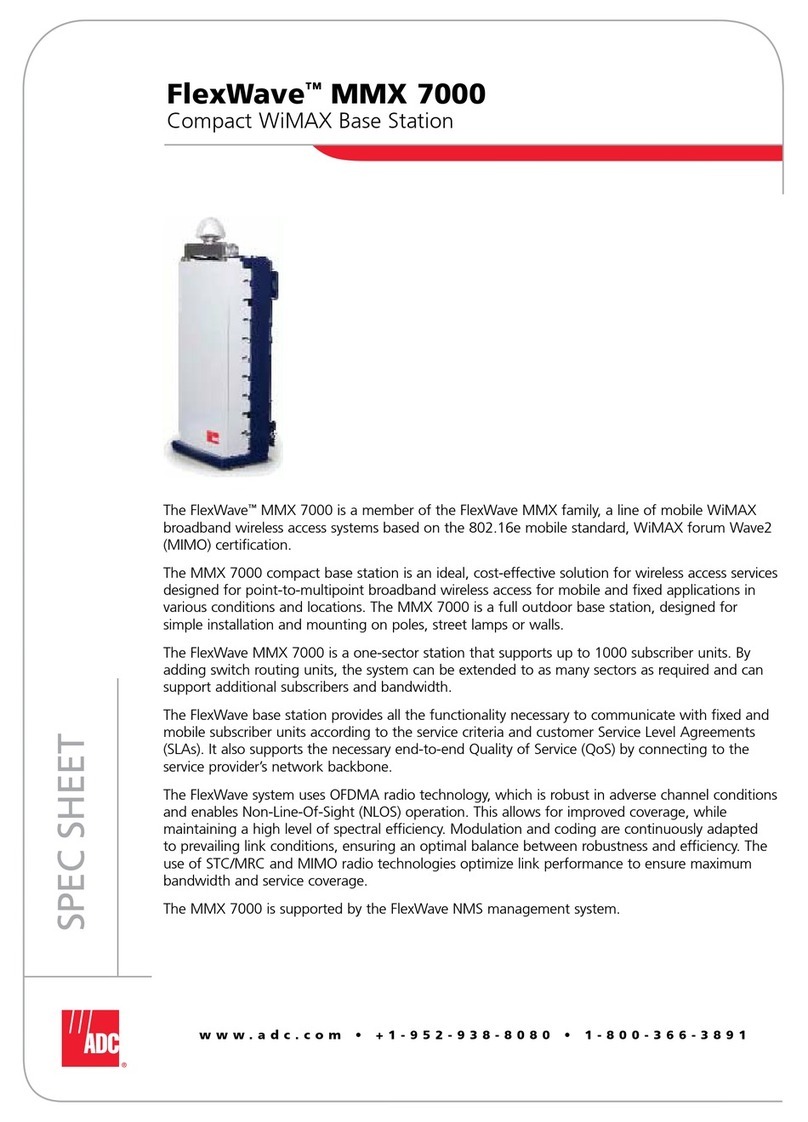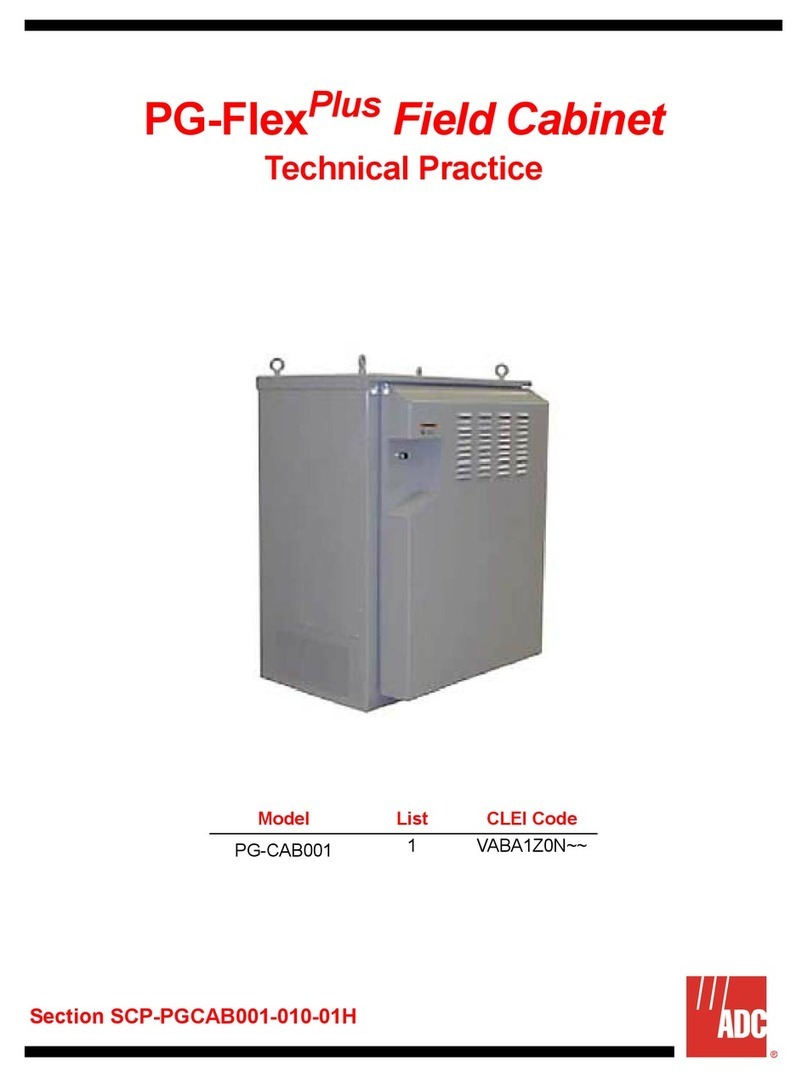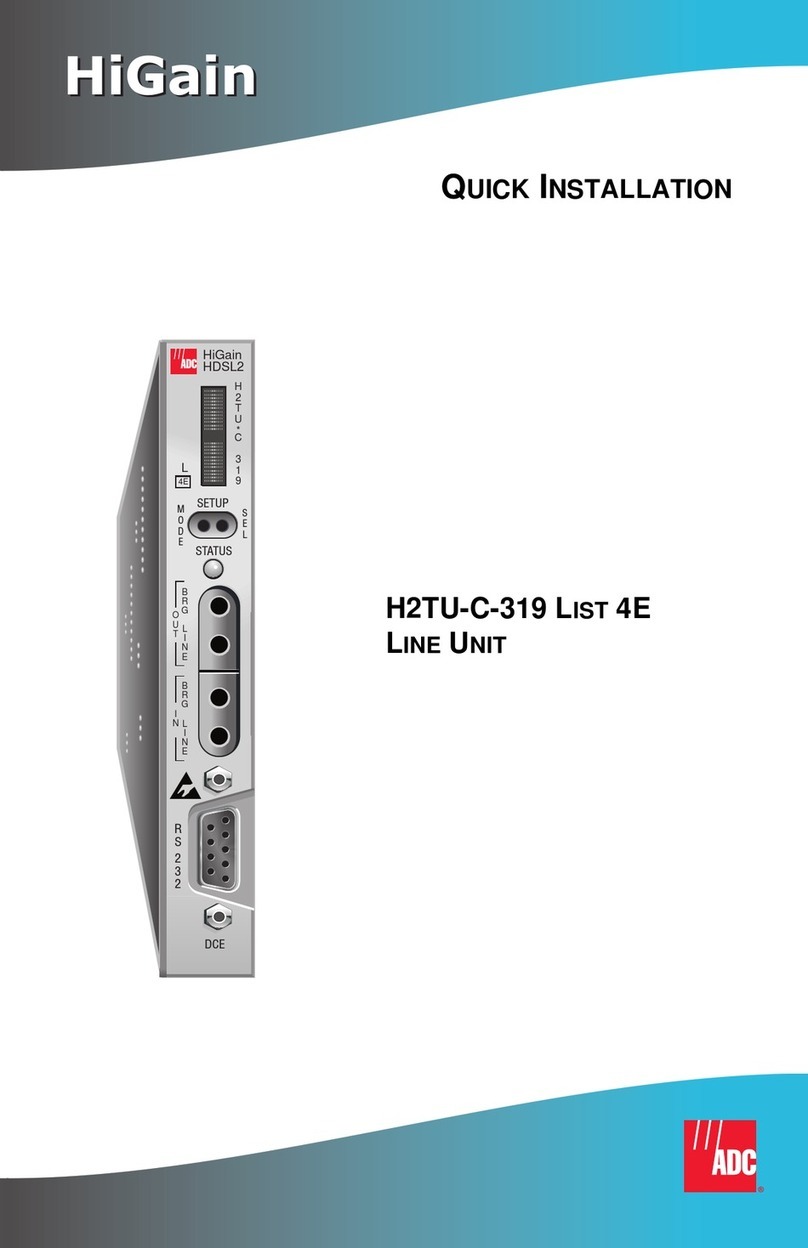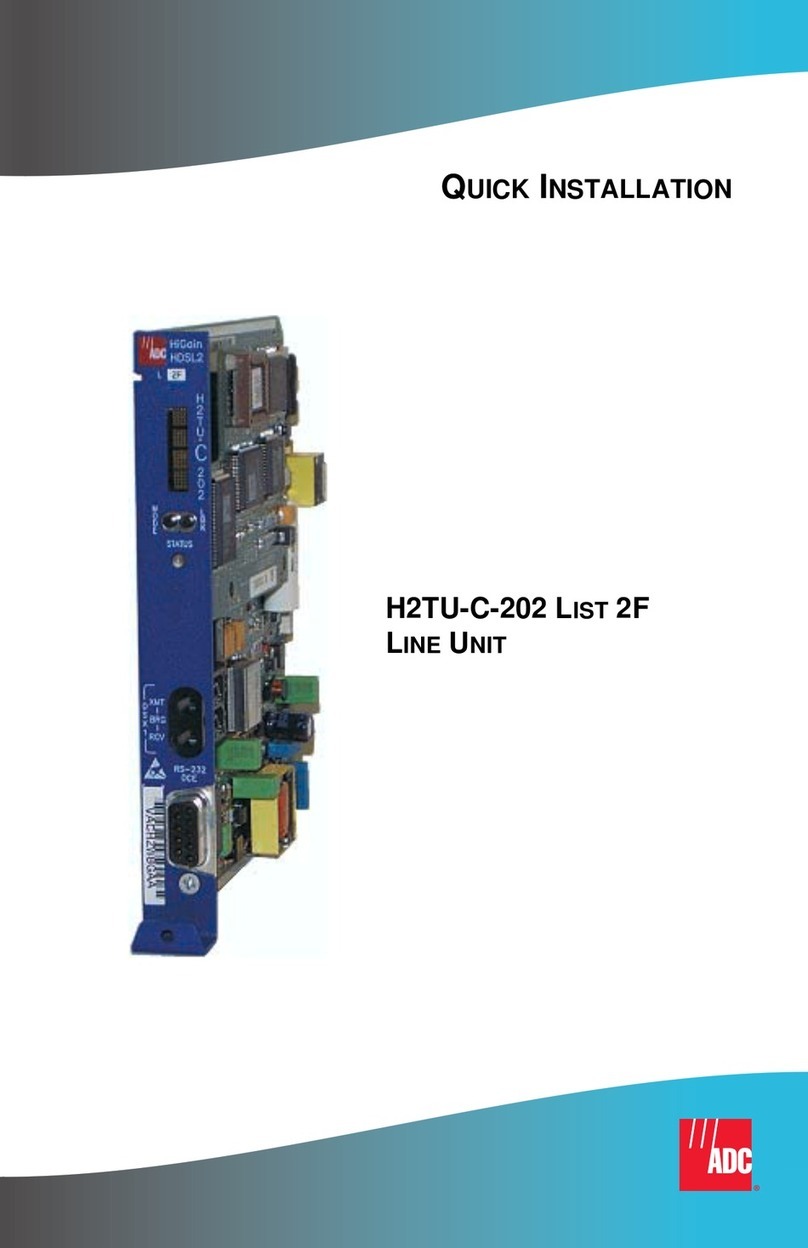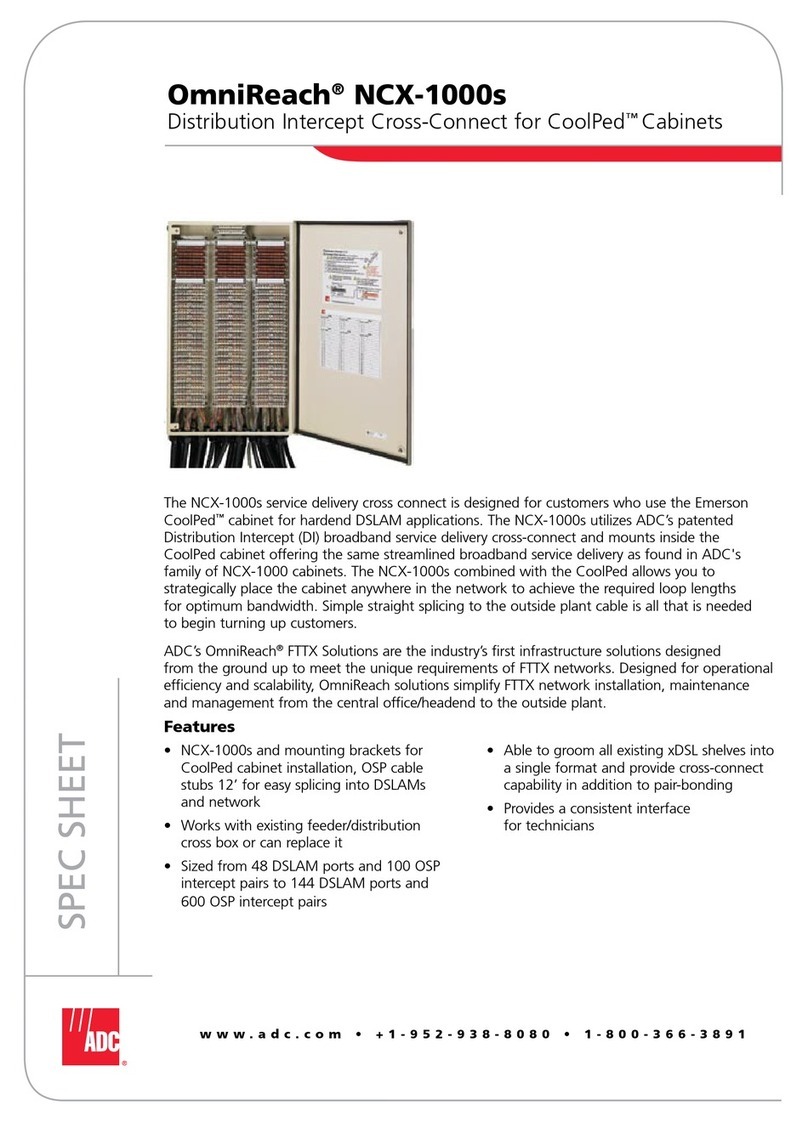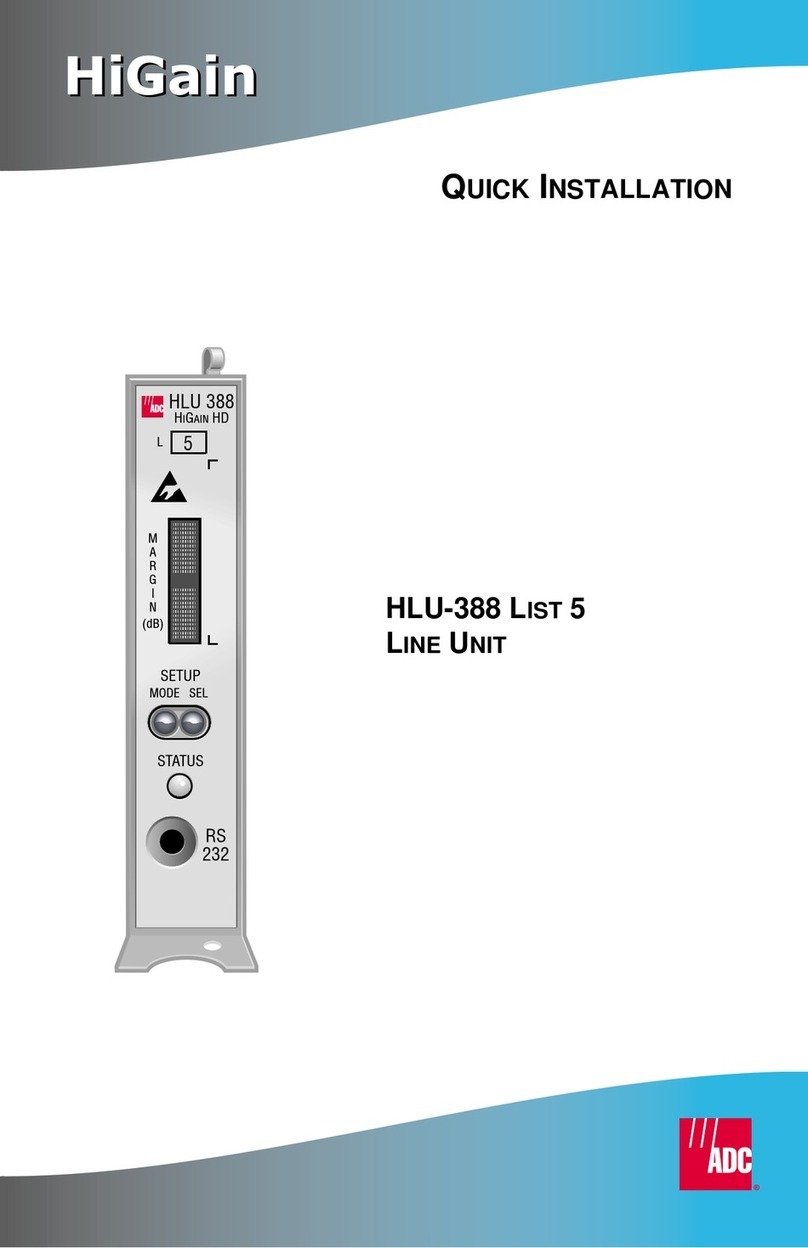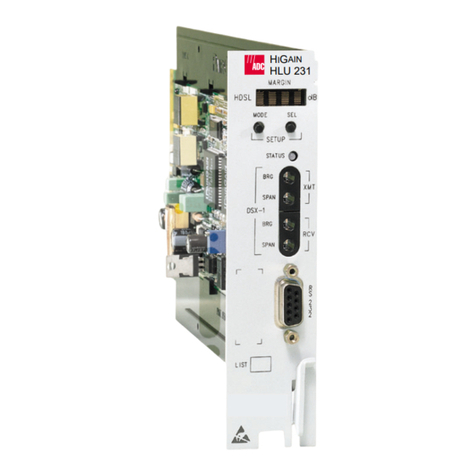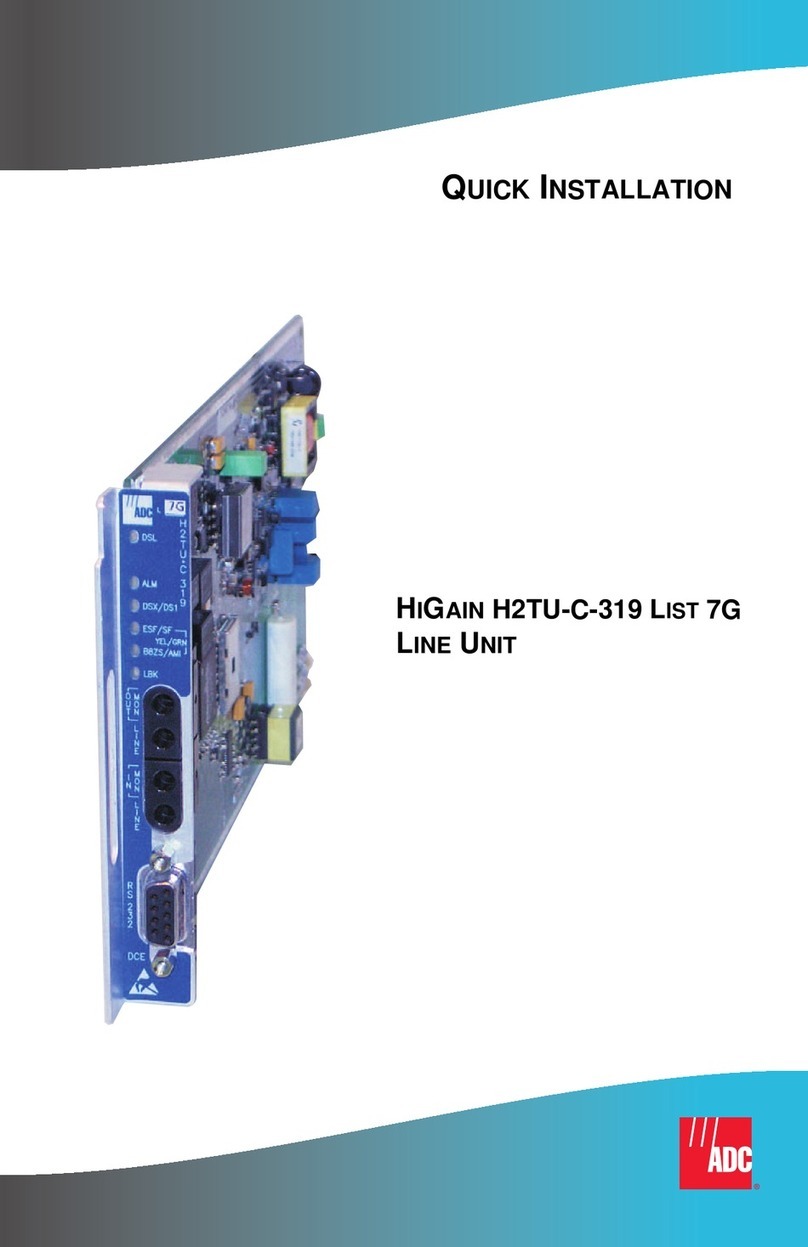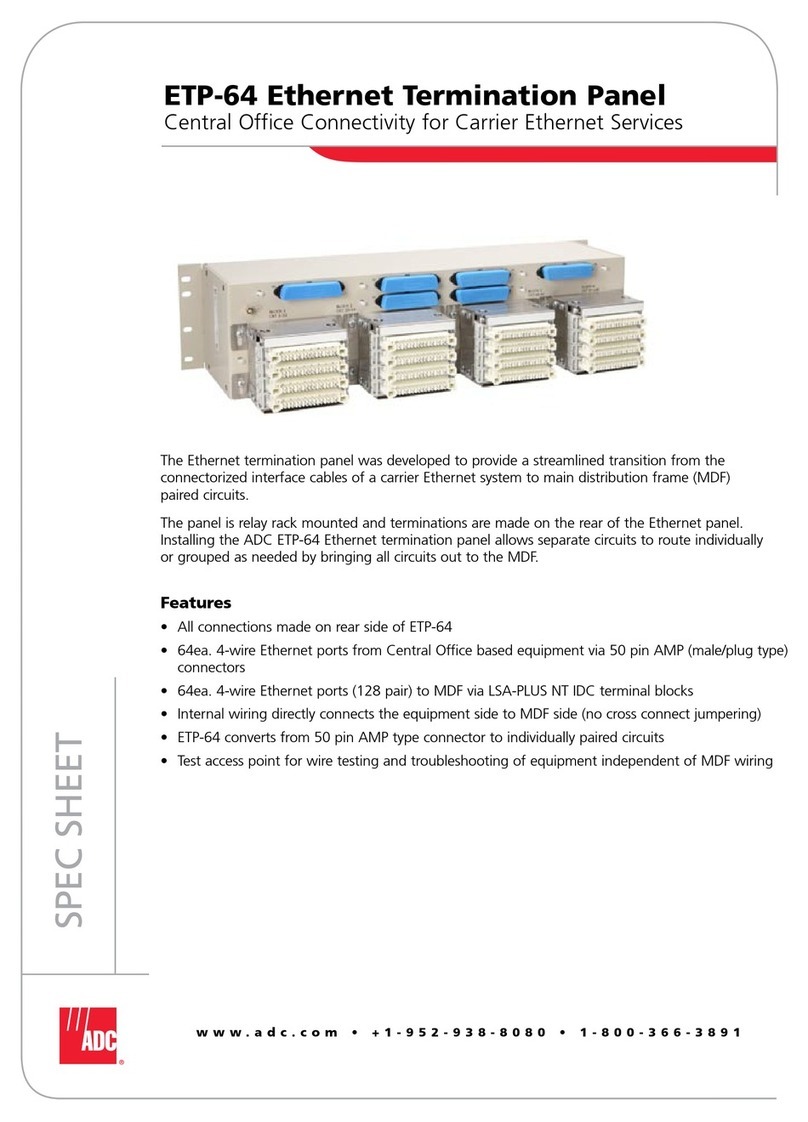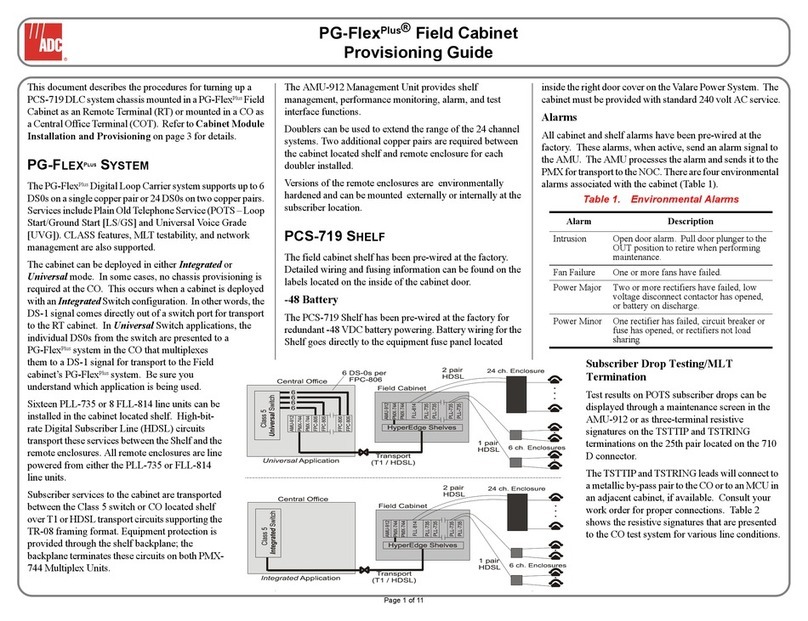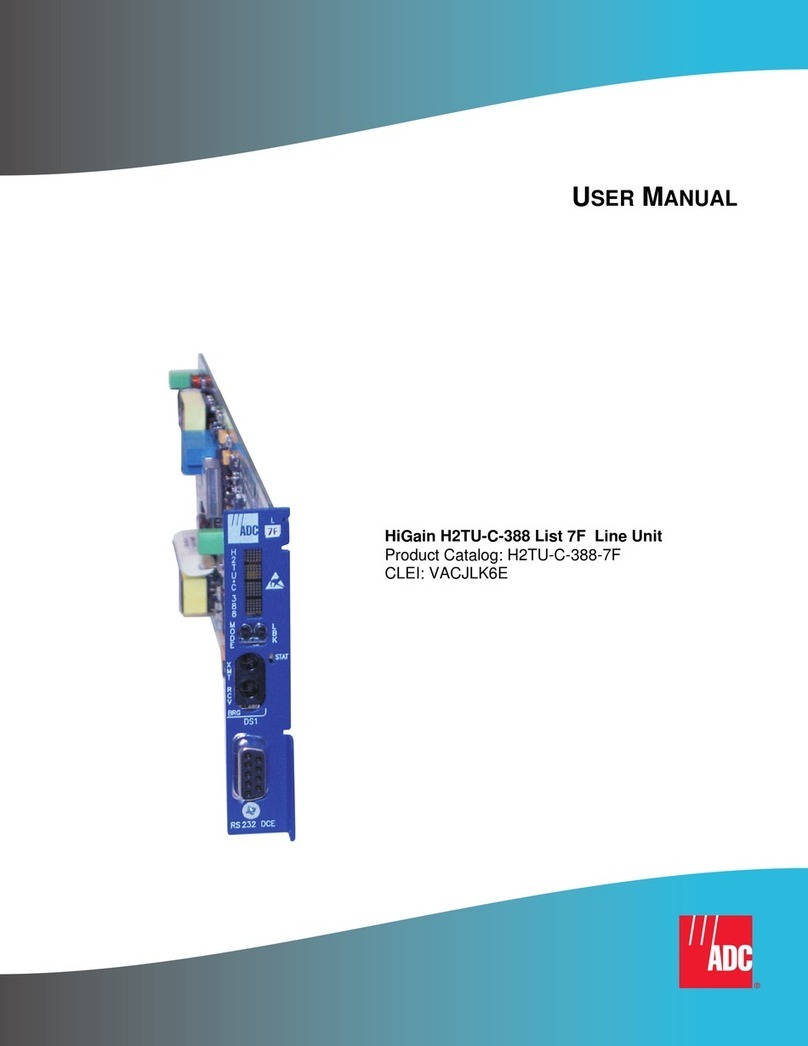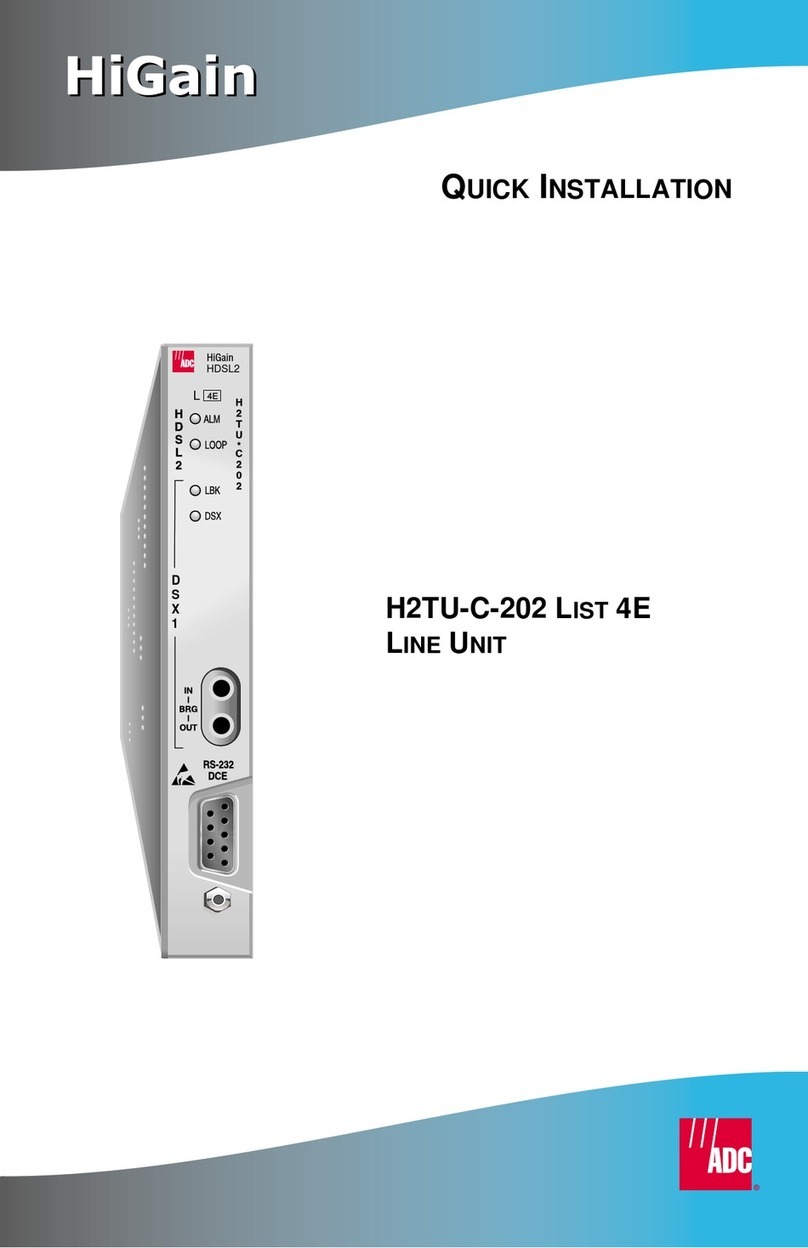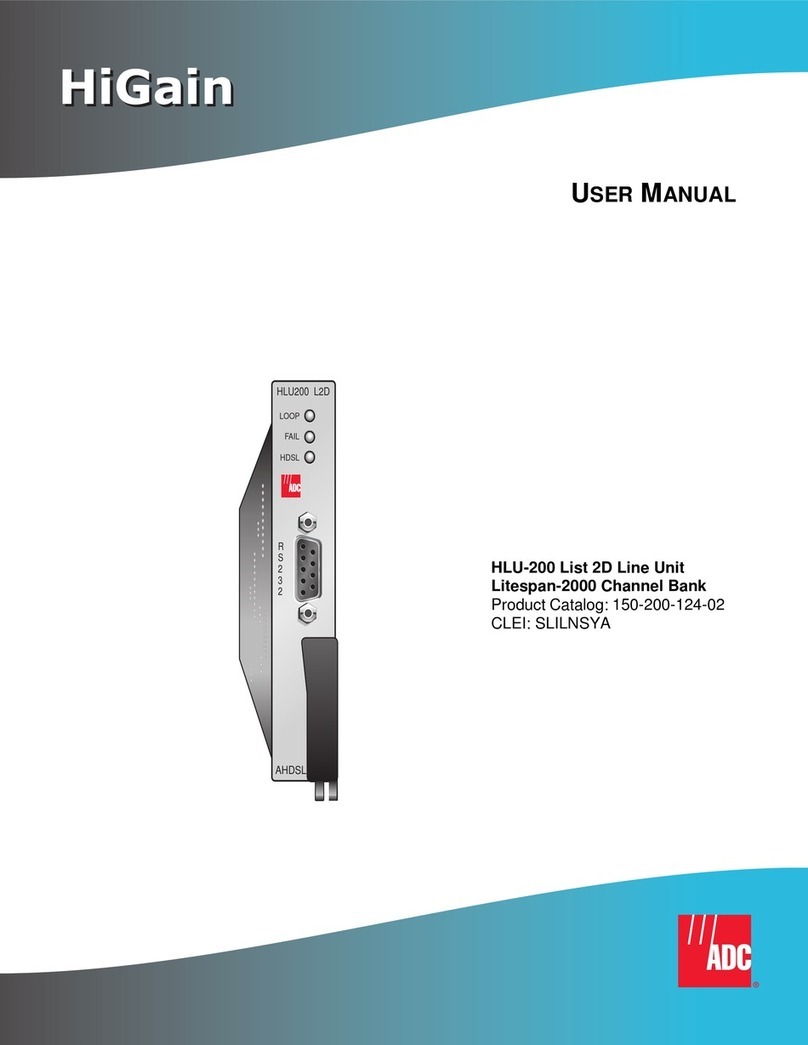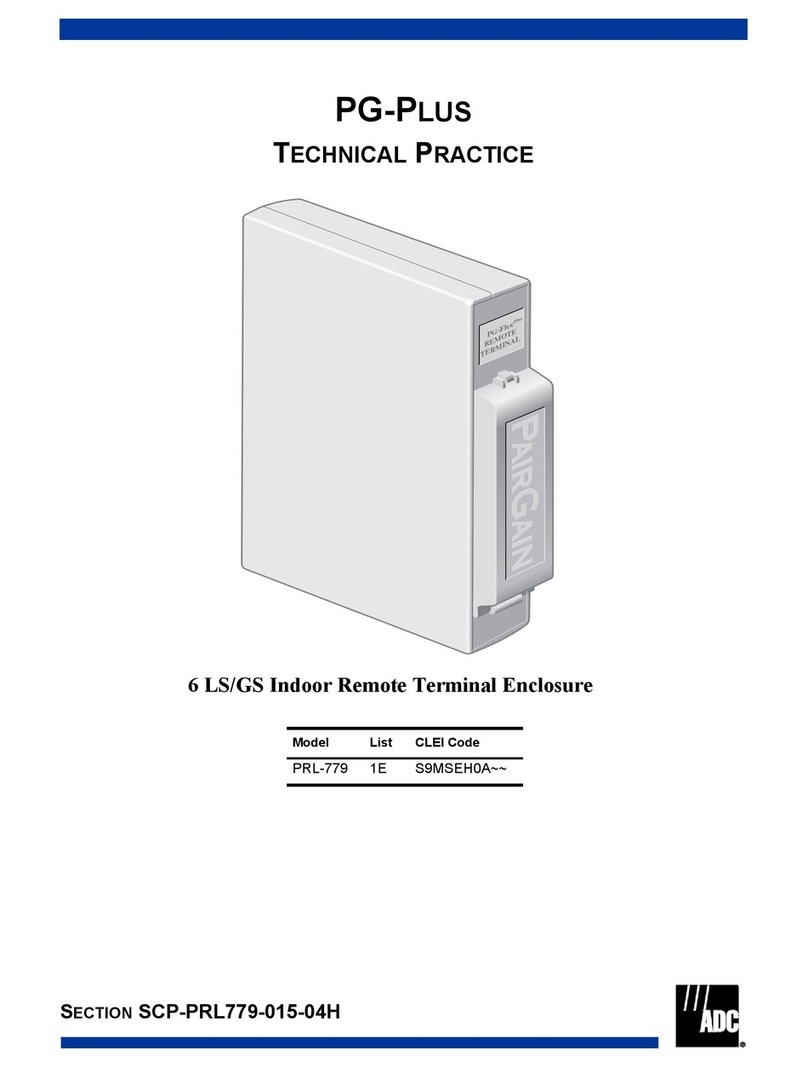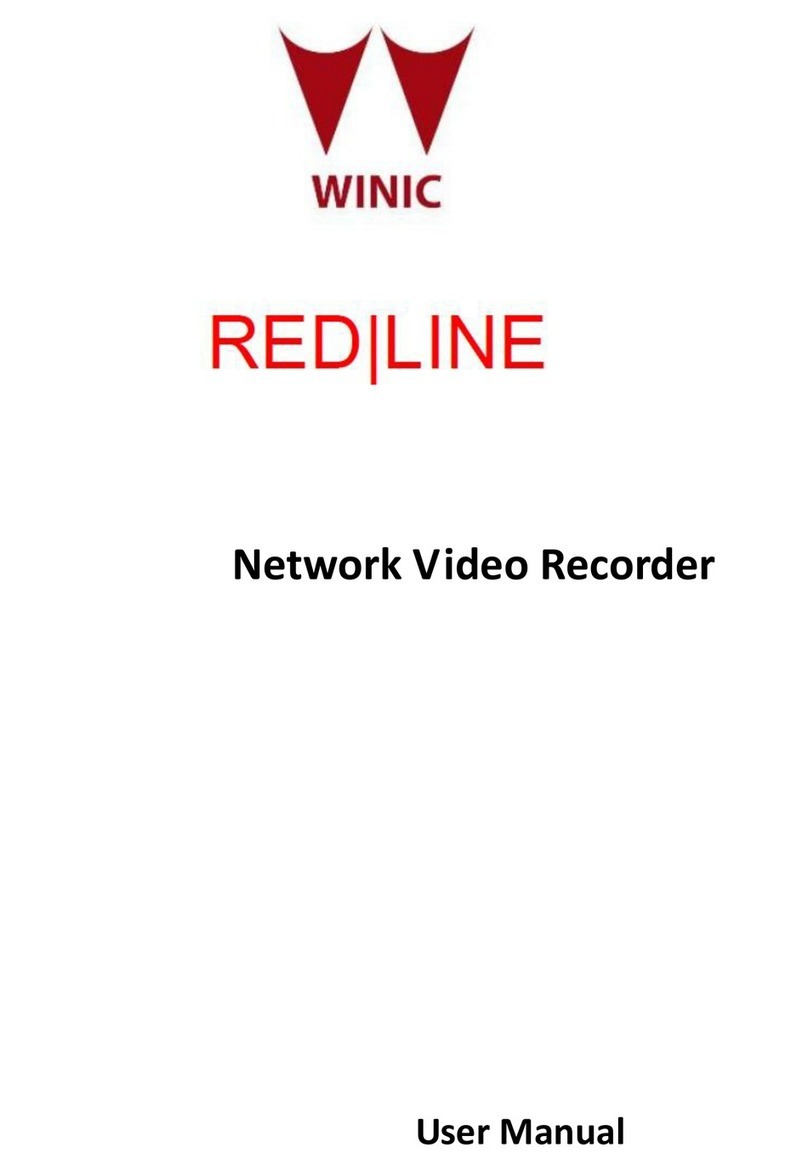
LOOPBACK TESTING
Initiate loopback testing from the HiGain maintenance menus or use the MODE and SEL
buttons. The inband codes shown in the table below can be sent by a test set.
* Fuse alarm is normally floating and at -48Vdc
when activated.
** System minor alarm contacts (pins 20 and 21) are
normally open and close upon alarm.
14
15
16
17
18
19
20
21
22
23
24
25
DS1 Tip Ground
Burn-in
DS1 Ring
Ground
DS1 Tip1
DS1 Ring1
39
40
41
42
43
44
45
46
47
48
49
50
-48V
-48V
1
2
3
4
5
6
7
8
9
10
11
HDSL2 Tip
HDSL2 Ring
FuseAlarm*
HDSL1 Tip1
HDSL1 Ring1
KEY KEY
26
27
28
29
30
31
32
33
34
35
36
37
38
12
13
Alarm**
NM Control Bus
Card-edge Connector
Modem settings
1200-9600 baud
8 data bits
No parity
1 stop bit
Hardware flow control:OFF
Terminal emulation:VT100
dB
MARGIN
HLU231
HIGAIN
HDSL
MODE SEL
RCV
BRG
XMT
L
SPAN
SPAN
BRG
DSX-1
R
S
2
3
2
SETUP
STATUS
Four-character display
DSX-1 test access jacks
CLEI and ECI
bar code label
List number
(HLU version
number)
Configuration number
Retaining latch
Displays status, provisioning, and
alarm messages. See table below
for a list of message descriptions.
SPAN
BRG
Provides splitting jack access to
(XMT) and from (RCV) the HDSL span
at the DSX-1 interface.
Provides non-intrusive bridging jack
access to (XMT) and from (RCV) the
HDSL span at the DSX-1 interface.
Allows monitoring of the T1 payloads.
Craft port provisioning
To access all system maintenance, provisioning
and performance screens, connect a standard
9-pin terminal cable between the serial port on a PC
and the HLU craft port.
Retains the card in the shelf
when pulled up; extracts the card
when pulled down.
System option buttons (for manual setting of
system parameters)
Use MODE and SEL to manually modify user options,
initiate loopbacks, and display DSX-1 line parameters.
1
2
3
4
Press the MODE button for 3 seconds and then
release.The front panel alternately displays the first
system parameter and its current setting.
Press SEL to step through all possible system
settings for the displayed parameter.
Press MODE to update the parameter and advance
to the next parameter.
After scrolling through all the parameters, press SEL
to confirm changes when prompted with a CONF YES
message, or press MODE to cancel all changes.
Status LED
Reports the following conditions:
Self Test is in process or a Customer
Remote Loopback (CREM) or Network
Local Loopback (NLOC) is in effect.
Green LED Normal operation
Flashing Green LED HDSL acquisition
Red LED Fuse alarm
Flashing Red LED System alarm
Yellow LED
FlashingYellow LED System is in Armed (ARM) mode.
DSX-1
Front Panel
8F
GNLB Loopback Commands
Loopback Inband Code Description
NLOC 1111000 DSX-1 signal is looped back to the network at the HLU.
NDU1 110000 DSX-1 signal is looped back to the network at the NDU1.
NDU2 111000 DSX-1 signal is looped back to the network at the NDU2.
NDU3 1010001 DSX-1 signal is looped back to the network at the NDU3.
NDU4 1010010 DSX-1 signal is looped back to the network at the NDU4.
NREM 1110000 DS1 signal is looped back to the network at the HRU.
SMJK 11000 DSX-1 signal is looped back to the network at the HRU SmartJack
module.
CREM 1111110 DS1 signal from customer is looped back to the customer at the HLU.
CDU1 111100 DS1 signal from customer is looped back to the customer at the CDU1.
CDU2 111110 DS1 signal from customer is looped back to the customer at the CDU2.
CDU3 1011001 DS1 signal from customer is looped back to the customer at the CDU3.
CDU4 1011010 DS1 signal from customer is looped back to the customer at the CDU4.
CLOC 1111100 DS1 signal from customer is looped back to the customer at the HRU.
Loopdown 11100 Deactivates any of the above loopback commands.
For more information about the Maintenance Terminal screens,
provisioning, and loopback mode testing, refer to the HLU-231 List 8F
technical practice, document number 150-231-186-xx. It can be
downloaded from the ADC Website page at www.adc.com.
Front Panel Alarm Messages
Message Description (listed in priority order)
LOSW Indicates that one of the HDSL loops has lost sync.
LLOS Indicates that no signal is detected at the DSX-1 input to the HLU.
RLOS Indicates that no signal is detected at the DS1 input to the HRU.
BER A system Bit Error Rate alarm is in effect.
MAL1 or MAL2 The margin on HDSL Loop 1 or Loop 2 has dropped below the threshold set by the user.
NONE No alarm present.
NOTE: Alarm (ALRM) displays prior to an alarm message. Pressing the SEL button initiates an Alarm Cutoff (ACO) condition.
System Configuration Codes
Code Description
VER xxxx The release firmware version (appears during the System Settings review mode).
LIST xxxx The list number of the product (appears during the System Settings review mode).
FRM xxxx Indicates the type of frame pattern being received from the DSX-1, where xxxx is SF,
ESF, UNFR, or NONE).
CODE xxxx The line code setting, where xxxx is Alternate Mark Inversion (AMI) or Bipolar with
8-Zero Substitution (B8ZS).
PLEV xxxx Indicates the HDSL line voltage in its LOW (-140 Vdc), HIGH (±112 Vdc), or DIS
(disabled) state.
To comply with the intrabuilding wiring requirements of GR-1089
CORE, Section 4.5.9, the shields of the ABAM-type cables that
connect the HLU-231 List 8F DSX-1 output ports to the cross-connect
panel must be grounded at both ends.
Front Panel Diagnostic Messages
Message Description (normal operating messages in bold)
1=xx or 2=yy Indicates the power of the received HDSL signal on each loop relative to noise. Any value
of 6 dB or greater is adequate for reliable system operation.
nHDU Number (n) of doublers in the circuit.
INSL xxDB The maximum Insertion Loss (INSL) message appears followed by xxdB, where xx is the
maximum insertion in dB of all spans and loops.
ACQ1 or ACQ2 The multiplexers of the HLU and the HRU or the first doubler are trying to establish
synchronization over Loop 1 or Loop 2 of Span 1.
AnL1 or AnL2 The multiplexers of the two devices on Span nare trying to establish synchronization with
each other on Loop 1 or Loop 2, where nis the number of the span.
BAD RT? The HLU is not receiving any response from the HRU.
FERR Framing bit error occurred at HLU DSX-1 input.
H1ES or H2ES HDSL Loop 1 or Loop 2 CRC error.
LBPV A local bipolar violation has been received at the DSX-1 input to the HLU.
MNGD The HLU is under control of the HMU-319 network management unit.
PWR FEED GND One of the HDSL loops has been grounded.
PWR FEED ON Indicates that the HDSL loops are not grounded or shorted.
PWR FEED OFF HDSL span power has been turned off.
PWR FEED SHRT Indicates a short between the two HDSL pairs or the inability of the HRU to communicate
with the HLU.
SELF TEST The HLU is in a self-test mode. This occurs every power on/off cycle.
SIG1 or SIG2 The transceivers of the HLU and HRU or first doubler are trying to establish contact with
each other on Loop 1 or Loop 2 of Span 1.
SnL1 or SnL2 The transceivers of the two devices on Span nare trying to establish contact with each
other on Loop 1 or Loop 2, where nis the number of the span.
TLOS HRU is in a logic loopback state caused by a loss of its T1 input from the CI (if enabled
at the HRU through its TLOS switch options).
System Setting Messages
Display Code Description (default values in bold).
EQL Sets the DSX-1 Equalizer (EQL) to: EXT (replaces the Internal Equalizer with an External
Equalizer), 0 (0 to 132 ft.), 133 (133 to 265 ft.), 266 (266 to 398 ft.), 399 (399 to 532 ft.),
533 (533 to 655 ft.).
LPBK Enables (ENA) or Disables (DIS) all inband SMJK loopback commands.
SPLB Configures the system for generic inband loopback commands (GNLB) or special loopback
commands (A1LB, A2LB, A3LB, A4LB, A5LB).
PWRF DIS = disables HDSL powering.
LOW = HDSL line voltage is -140 Vdc maximum.
AUTO = automatically switches between -140 Vdc for non-doubler applications and
±112 Vdc for doubler applications.
HIGH = ±112 Vdc for all applications.
ZBTS ON = the ESF frame is operating in its Zero-Byte Time Slot Interchange (ZBTSI) mode.
OFF = the ESF frame is operating in its normal non-ZBTSI mode.
BERT NONE = prevents generation of a system alarm due to excessive BER.
1E-6 or 1E-7 = alarm activates when BER threshold exceeds 10-6 or 10- 7, respectively.
LBTO Loopback timeout = NONE, 20, 60, 120 minutes.
ALM Enables (ENA) or disables (DIS) output alarm on pins 20 and 21 when alarm condition
occurs.
DS1 Line code = places the HLU and HRU in B8ZS, AUTO or AMI mode.
FRMG Framing =AUTO or Unframed (UNFR).
HAIS 2LP = transmits the AIS signal at both the HLU and the HRU T1 output ports when both
HDSL loops are not in sync (LOSW). 1LP = applies when either of the two HDSL loops are
not in sync or if a Margin alarm occurs.
SAIS Enables (ENA) or disables (DIS) transmission of AIS signal during NREM/SMJK loopbacks.
RDA Enables (ENA) or disables (DIS) alarm indications due to remote DS1 LOS at HRU input.
ALMP Enables a line to output an (AIS) payload of all ones or an (LOS) condition at its DS1 ports
for LOSW, DS1 LOS, and margin alarms.
BPVT Enables (ENA) or disables (DIS) Bipolar Violation Transparency (BPVT).
MARG (a)
(a) Can only be set through the Maintenance Terminal.
Sets Margin Alarm threshold (0 to 15 dB). Default = 4 dB.
DS0 (a) NONE = no DS0 channels blocked; BLK = some channels blocked.
CONF YES = Updates current selections; NO =Does not update current selection.
